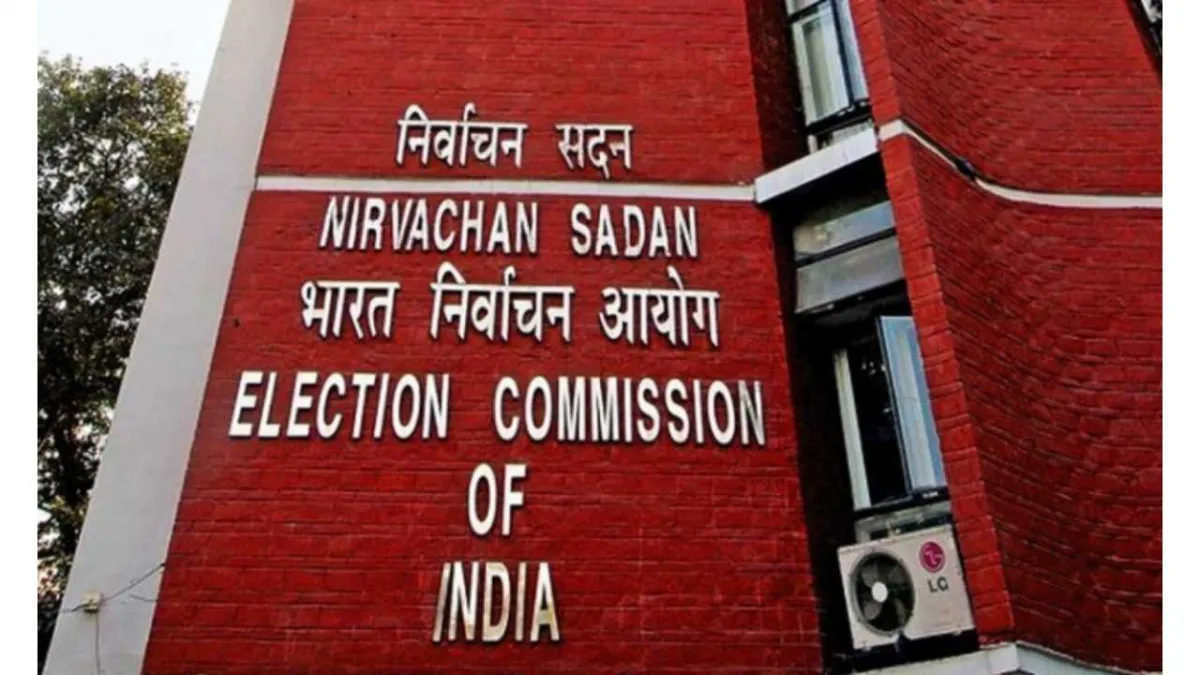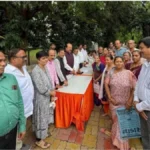New Delhi, August 1: The election for the Vice President’s post will be held on September 9. The Election Commission announced this on Friday. According to the Commission, the notification for the Vice Presidential election will be issued on August 7, and the last date for filing nomination papers will be August 21.
The Commission stated that if voting is required, it will take place on September 9 from 10 AM to 5 PM in Room No. F-101, Vasudha, located on the first floor of Parliament House. The results will be declared on the same day.
The Vice President’s post became vacant on July 21 after the outgoing Vice President Jagdeep Dhankhar resigned. The Election Commission has appointed the Rajya Sabha Secretary-General as the Returning Officer and two officers from the Rajya Sabha Secretariat as Assistant Returning Officers for the Vice Presidential election.
The electoral college for the Vice Presidential election consists of members of the Lok Sabha and Rajya Sabha. Nominated members of the Rajya Sabha are also eligible to vote in the Vice Presidential election.
The electoral college for the Vice Presidential election includes 233 elected members of the Rajya Sabha, 12 nominated members of the Rajya Sabha, and 543 members of the Lok Sabha.
With five vacancies in the Rajya Sabha and one in the Lok Sabha, the effective strength of the electoral college is 782, and the winning candidate will need 391 votes, provided all eligible voters exercise their franchise.
The ruling NDA has an advantage in the upcoming election. Out of the 543 Lok Sabha seats, one seat in West Bengal’s Basirhat is vacant, while five seats are vacant in the 245-member Rajya Sabha. Of the five vacant Rajya Sabha seats, four are from Jammu and Kashmir and one from Punjab.
In the Lok Sabha, the BJP-led National Democratic Alliance (NDA) has the support of 293 out of 542 members. The ruling coalition has the support of 129 members in the Rajya Sabha (effective strength of 240), assuming nominated members vote in favor of the NDA candidate. The ruling coalition has the support of a total of 422 members.
To be elected as Vice President, a person must be a citizen of India, be at least 35 years of age, and be eligible for election as a member of the Rajya Sabha.
Vasudha
“Vasudha” is a Sanskrit term meaning “Earth” or “Mother Earth,” often symbolizing fertility, nature, and sustainability in Indian culture. While not a specific physical site, it is a concept deeply rooted in Hindu philosophy, Ayurveda, and environmental traditions, reflecting reverence for the planet. In modern contexts, “Vasudha” is sometimes used in names of eco-friendly initiatives, organizations, or cultural projects promoting ecological balance.
Parliament House
Parliament House is the seat of Australia’s federal government, located in Canberra. Opened in 1988, it replaced the Old Parliament House and serves as the meeting place for the country’s bicameral legislature. The building is an architectural landmark, designed to symbolize democracy and blend with the natural landscape of Capital Hill.
Rajya Sabha
The **Rajya Sabha** (Council of States) is the upper house of India’s Parliament, established in 1952 under the Constitution. It represents India’s states and union territories, with members elected by state legislatures or nominated by the President for their expertise in arts, sciences, or social services. Designed to provide stability and scrutiny, it plays a key role in legislation and governance alongside the Lok Sabha (lower house).
Lok Sabha
The **Lok Sabha** is the lower house of India’s bicameral Parliament and the primary legislative body of the country. Established in 1952 after India’s independence, it consists of elected representatives who draft and pass laws, oversee the executive branch, and represent the people. Members are elected for five-year terms, and the Lok Sabha plays a key role in shaping India’s democracy and governance.
Basirhat
Basirhat is a town in the North 24 Parganas district of West Bengal, India, known for its historical and cultural significance as part of the Bengal region. It has roots in ancient and medieval Bengal, with influences from Mughal and British colonial periods. Today, it serves as a local administrative and commercial hub, reflecting a blend of traditional Bengali culture and modern development.
Jammu and Kashmir
Jammu and Kashmir is a region in northern India known for its stunning landscapes, including the Himalayas and picturesque valleys like Kashmir. Historically, it was a princely state under British rule before acceding to India in 1947, sparking ongoing territorial disputes with Pakistan. The region is rich in cultural heritage, blending Hindu, Buddhist, and Islamic influences, with landmarks such as the Amarnath Cave and Mughal gardens.
Punjab
Punjab is a historically and culturally significant region in South Asia, divided between India and Pakistan. Known as the “Land of Five Rivers,” it has been a cradle of ancient civilizations, including the Indus Valley, and played a key role in the development of Sikhism, with the Golden Temple in Amritsar as its spiritual center. Punjab has a rich agricultural heritage, vibrant traditions like Bhangra dance, and a history shaped by empires, including the Mughals and British colonialism.
National Democratic Alliance (NDA)
The **National Democratic Alliance (NDA)** is a center-right political coalition in India, founded in 1998 and led by the Bharatiya Janata Party (BJP). It was formed to unite various regional and national parties under a common platform, with the NDA first coming to power under Prime Minister Atal Bihari Vajpayee. The alliance has played a major role in Indian politics, returning to power in 2014 under Narendra Modi and emphasizing economic reform, nationalism, and development.






